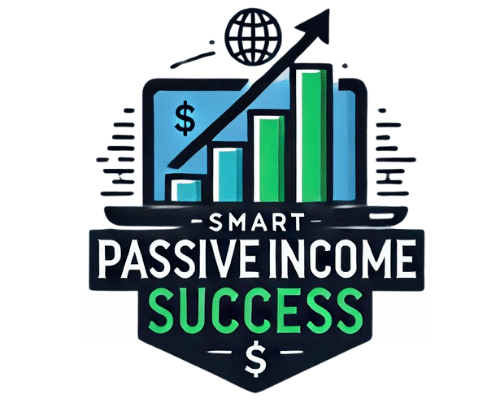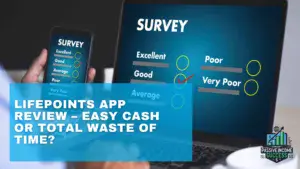Creating content that truly engages isn’t just a skill; it’s an art form, especially in the world of parent blogging. Parents are looking for information, tips, and shared experiences they can relate to. They want content that feels personalized and authentic, something that speaks to their daily lives and challenges.
To kick things off, think about this: why does engaging content matter? Well, for parent bloggers, it’s not just about writing good posts. It’s about building a community. Parents come back to blogs where they feel a connection, where they find useful advice, and where they see a part of their own lives reflected.
Imagine sharing a story about a sleepless night with a newborn. If you can describe those emotions, the desperation, the tiny triumphs, parents will nod along in recognition and keep reading. That’s engaging content. It moves people, makes them laugh or cry, and most importantly, makes them want to come back for more.
Remember, your goal is to connect with your audience on a personal level. This isn’t about getting a high number of page views one time. It’s about creating loyal readers who feel invested in your journey and trust your advice. When parents trust you, they’re more likely to engage, comment, share your content, and follow your recommendations.
Lastly, don’t think of engagement purely in terms of comments and likes. Engaging content can be measured by how much it resonates and stays with your readers. Are they thinking about your post during a tough parenting moment? That’s the real power of engaging content.
Table of Contents
Understanding Your Audience: Who Are Your Readers?
 Getting to know your audience is fundamental. You can’t create compelling content if you don’t know who you’re talking to. That’s a bit like trying to have a deep conversation with a stranger in the dark. So, start by conducting some audience research. Get a clear picture of who your readers are and what they need.
Getting to know your audience is fundamental. You can’t create compelling content if you don’t know who you’re talking to. That’s a bit like trying to have a deep conversation with a stranger in the dark. So, start by conducting some audience research. Get a clear picture of who your readers are and what they need.
Start with Demographics
Begin with some basic demographics. Are your readers new parents, or are they seasoned pros with a couple of kids under their belt? Are they mostly moms, dads, or a mix of both? Understanding their age, gender, location, and even their lifestyle habits can help you tailor your content.
Dive into Psychographics
But don’t stop with demographics. Dive into psychographics to uncover what drives your readers. What are their biggest challenges? What kind of advice and experiences are they hunting for? One way to gather this information is to engage directly with your readers. Run surveys on your blog or social media channels, ask questions, and encourage your followers to share their thoughts and concerns.
Creating Reader Personas
Next, use this research to create reader personas—imaginary profiles of your typical readers. Give them names, ages, occupations, and a snippet of their daily lives. For instance, you might have ‘Sarah,’ a first-time mom who’s juggling a career and a newborn, desperately seeking time-saving tips. Or ‘John,’ a stay-at-home dad who loves DIY projects and needs creative parenting hacks.
Using Personas to Guide Content
These personas become your guideposts. Whenever you’re creating content, think about which persona you’re speaking to. This approach helps you maintain a consistent voice and ensures your content is always relevant and engaging.
Regularly Updating Your Understanding
Lastly, remember that understanding your audience isn’t a one-time task. Your readers’ needs and interests might evolve, especially as their kids grow. Make it a habit to check in regularly, refresh your reader personas, and keep your content aligned with what matters most to your audience.
Related Post: How To Make Money From Home: A Guide For Stay-at-Home Parents
Crafting Relatable and Helpful Content
 Writing relatable and helpful content is where the magic happens. Think about those times when you’ve read something that just resonated with you—it felt like the writer was speaking directly to you. That’s what you want to achieve.
Writing relatable and helpful content is where the magic happens. Think about those times when you’ve read something that just resonated with you—it felt like the writer was speaking directly to you. That’s what you want to achieve.Share Personal Stories
Start with authenticity. Share your personal stories, challenges, and triumphs. Parents appreciate it when you keep it real. Talk about the messy, imperfect moments just as much as the victories. It’s these genuine insights that build trust and make your content relatable.
Provide Actionable Advice
Next, focus on providing actionable advice. Parents are always looking for practical solutions. Whether it’s tips on managing tantrums, cooking quick family meals, or organizing playdates, make sure your advice is clear and easy to follow. Think about the problems you’ve faced and how you solved them. That way, you’re offering real value.
Balance Honesty with Privacy
Balancing honesty with privacy is key. While sharing personal experiences can make your content more engaging, it’s important to protect your family’s privacy. Use discretion and consider anonymizing details if necessary. Your readers will respect your boundaries.
Inject Humour
Don’t be afraid to inject some humour. Parenting is hard, but it’s also filled with hilarious moments. Sharing these lighter stories can make your readers smile and connect with you more deeply. Remember, laughter is a powerful tool to build a sense of community.
Encourage Reader Interaction
Lastly, encourage interaction. Ask your readers to share their own experiences and solutions in the comments. This not only boosts engagement but also fosters a sense of belonging. When readers see their feedback is valued, they’re more likely to return and participate.
Related Post: Top 5 Reasons Blogging Is Perfect for Stay-at-Home Parents
Utilizing E-E-A-T Principles in Your Content
 Applying Experience, Expertise, Authoritativeness, and Trust (E-E-A-T) principles to your parent blog elevates your content, making it not only engaging but also reliable. These principles ensure your blog stands out as a trustworthy source for parents seeking advice and shared experiences.
Applying Experience, Expertise, Authoritativeness, and Trust (E-E-A-T) principles to your parent blog elevates your content, making it not only engaging but also reliable. These principles ensure your blog stands out as a trustworthy source for parents seeking advice and shared experiences.Demonstrate Expertise
Start by sharing your personal experiences. This is where you, the parent, come into play. Whether it’s a story about surviving the toddler years or tips on navigating school choices, your firsthand experiences add a unique, authentic voice to your content. Readers appreciate knowing that you’ve been in their shoes and have insights grounded in real life.
Establish Authoritativeness
Expertise comes next. While personal stories are invaluable, backing up your advice with well-researched information takes it to another level. Cite reputable sources, reference studies, and include expert opinions. This combination of personal insight and factual information builds credibility and reassures your readers that your advice is sound.
Build Trust with Transparency
Authoritativeness is about consistency and quality. Regularly publishing well-crafted, thoughtful posts adds to your authority. Consistency doesn’t mean you need to post daily, but having a steady schedule helps. High-quality content means fewer errors, detailed posts, and thorough advice. Over time, readers will come to see your blog as a reliable go-to resource.
Engage Respectfully with Your Audience
Trust is the backbone of E-E-A-T. Be transparent about your recommendations and collaborations. If you’re promoting an affiliate product, tell your readers why you believe in it. Honesty fosters trust. Also, engaging respectfully and positively with your audience, whether in comments or on social media, strengthens this trust. Readers who trust you are more likely to follow your advice and share your content.
Related Post: Balancing Parenting and Blogging: Time Management Tips for Stay-at-Home Moms and Dads
Turn Your Passion into Profits
SEO Best Practices for Parent Bloggers
 SEO might sound like tech jargon, but mastering it can seriously boost your blog’s visibility. Think of it as making your awesome content easier to find. Here are some SEO strategies tailored for parent blogs.
SEO might sound like tech jargon, but mastering it can seriously boost your blog’s visibility. Think of it as making your awesome content easier to find. Here are some SEO strategies tailored for parent blogs.Optimize On-Page Elements
Start with keyword research. Identify the terms and phrases that parents are searching for. Tools like Jaaxy or AnswerThePublic can help you discover what’s trending in your niche. Once you’ve got a list, incorporate these keywords naturally into your posts, titles, and headings. Remember, it’s about enhancing readability, not stuffing keywords everywhere.
Focus on Quality Content
On-page SEO is your next best friend. This includes optimizing your meta descriptions, using header tags, and ensuring your blog posts are well-structured. A well-written meta description can make your post more appealing in search results. And don’t overlook image alt text; it’s a small detail that has a big impact on SEO.
Build Quality Backlinks
Quality content is king. Search engines favour content that is valuable and relevant. Write in-depth posts that thoroughly cover your topic. Aim for content that provides clear answers and useful information. If your readers find your content helpful, they’ll spend more time on your page, which is a positive signal to search engines.
Ensure Mobile Optimization
Backlinks are another valuable asset. When other reputable sites link to your blog, it boosts your credibility in the eyes of search engines. Think about collaborating with other bloggers, guest posting, or even getting featured in parenting roundups.
Improve Site Speed and Navigation
Lastly, don’t forget about mobile optimization. A lot of parents are hopping onto your blog via their phones. Ensuring your site is mobile-friendly improves user experience and can improve your ranking. Fast loading times and easy navigation are crucial here.
Related Post: Monetizing Your Parenting Blog: The Best Affiliate Programs for Stay-at-Home Parents
Incorporating Affiliate Links Naturally
 Affiliate marketing can be a great way to monetize your blog, but the trick is to do it seamlessly. Nobody loves a sales pitch disguised as a blog post. The key is integrating those links in a way that feels organic and sincere.
Affiliate marketing can be a great way to monetize your blog, but the trick is to do it seamlessly. Nobody loves a sales pitch disguised as a blog post. The key is integrating those links in a way that feels organic and sincere.Create Content Around Affiliates
Start by choosing products that you genuinely believe in. If you’re passionate about a product, it’ll show in your writing, and your readers will trust your recommendations. Whether it’s a baby carrier that you’ve used daily or a toddler snack that saved your sanity, authentic endorsements are gold.
Be Transparent with Disclosures
Create valuable content around your affiliate links. Instead of just dropping a link in a random post, build a story or provide a review. Share how the product fits into your life and the benefits it’s brought you. Demonstrating real-life use cases makes the recommendation more credible.
Integrate Links Seamlessly
Transparency is crucial. Always disclose affiliate links clearly. Readers appreciate honesty, and being upfront about your affiliate relationships builds trust. A simple disclaimer at the beginning or end of your post will do the trick.
Balance Monetized and Non-Monetized Content
Incorporate affiliate links where they naturally belong. For instance, in a blog post about ’10 Essential Items for New Parents,’ you can easily mention and link to the products you recommend. It feels helpful rather than pushy.
Use Visuals to Enhance Recommendations
Balance is important. Not every post needs to include affiliate links. Mix up your content with purely informational pieces, personal stories, and helpful guides. This variety keeps your blog authentic and lessens the impression that you’re only in it for the money.
Related Post: The Best Blogging Tools for Busy Parents: Simplify and Streamline Your Workflow
Engaging with Your Audience Through Comments and Social Media
 Encouraging a lively and interactive community around your blog is essential. Fostering an environment where readers feel heard and valued can significantly boost engagement and loyalty.
Encouraging a lively and interactive community around your blog is essential. Fostering an environment where readers feel heard and valued can significantly boost engagement and loyalty.Respond to Comments Promptly
Start by actively encouraging comments at the end of your posts. Pose questions, ask for opinions, and make it clear you value their input.
Leverage Social Media Platforms
Responding to comments is just as important. When readers take the time to share their thoughts, acknowledge them. A simple thank you, a thoughtful reply, or even just a like can go a long way. It shows you’re listening, and this active presence strengthens your relationship with your audience.
Host Interactive Sessions
Use social media to extend your reach. Platforms like Instagram, Facebook, and Twitter can help you connect with more parents. Share clips from your daily life, post snippets of your blog, and engage with followers by responding to their posts and messages. Social media is a fantastic way to create a more personal connection.
Foster Community Through User-Generated Content
Running Q&A sessions or live chats on social media can be a great way to interact directly with your audience. These sessions provide immediate feedback, and the real-time interaction can be incredibly engaging. Plus, it gives your readers a chance to get to know you better.
Implement Strong Calls-to-Action
Create a sense of community by encouraging readers to share their experiences and stories. User-generated content like photos, reviews, or guest posts can add a variety of perspectives to your blog and social media. Celebrate these contributions and make sure to give credit where it’s due.
Adapt Based on Feedback
Don’t forget the power of a good call to action. Whether it’s encouraging readers to comment or follow you on social media, a clear and compelling call to action drives interaction. Make it easy for readers to engage with your content by providing clear instructions and multiple platforms for interaction.
Related Post: Parenting Niche Ideas: How to Find Your Unique Voice and Audience
Measuring and Analyzing Content Performance
 Using analytics tools can demystify how well your content is performing. Tools like Google Analytics offer deep insights into various metrics, helping you understand what’s resonating with your readers.
Using analytics tools can demystify how well your content is performing. Tools like Google Analytics offer deep insights into various metrics, helping you understand what’s resonating with your readers.Analyze Traffic Sources
Keep an eye on key metrics such as bounce rate, time on page, and conversion rate. A high bounce rate might suggest that readers aren’t finding your content relevant. Meanwhile, a longer time on the page indicates that your readers are engaged and finding value in your posts.
Identify High-Performing Content
Track your traffic sources. Are your readers coming from social media, search engines, or direct traffic? Knowing where your audience is coming from can help you focus your promotional efforts more effectively.
Assess Reader Engagement
Pay attention to which pieces of content are performing best. If certain blog posts or topics are gaining more traction, consider creating more content in those areas. It’s all about giving your audience more of what they want.
Conduct A/B Testing
Reader engagement is another critical metric. Track comments, shares, and likes to see what kind of content sparks the most interaction. These signs of engagement are as important as raw traffic numbers because they reflect deeper connections.
Evaluate Monetization Efforts
Use A/B testing to compare different versions of your content. Change up your headlines, CTAs, or even the format of your posts to see what works best. This methodical approach takes the guesswork out of optimizing your content.
Refine Your Strategy
Don’t forget to analyze your affiliate links and monetization strategies. Which links are getting clicks and conversions? Use this data to fine-tune your approach and maximize your revenue without compromising the user experience.
Related Post: Turning Your Parenting Blog into a Full-Time Income Stream: Advanced Strategies
Turn Your Passion into Profits
Conclusion: Building a Loyal and Engaged Reader Base
 Your journey as a parent blogger is about more than just writing—it’s about connecting, sharing, and growing with your readership. By understanding your audience, crafting relatable content, and utilizing E-E-A-T principles, you’ve set a solid foundation for engagement.
Your journey as a parent blogger is about more than just writing—it’s about connecting, sharing, and growing with your readership. By understanding your audience, crafting relatable content, and utilizing E-E-A-T principles, you’ve set a solid foundation for engagement.Incorporating SEO ensures your content reaches those who need it, while genuine interactions through comments and social media build a trustworthy community. And, naturally blending in affiliate links helps monetize your blog without compromising the reader’s experience.
Measuring and analyzing your performance allows you to adapt and refine your strategy, ensuring you stay relevant and engaging. Each of these elements contributes to creating a blog that attracts readers and keeps them coming back.
Keep the focus on adding value, being authentic, and continuously interacting with your community. Over time, these efforts will pay off, resulting in a loyal and engaged reader base that trusts and values your insights.







Great post! I really like the idea of getting to know your readers before writing. Understanding who your readers are is a smart way to make sure your posts speak to the right people. I also agree that adding personal stories and helpful tips is important. As a parent and grandparent, I love when content is easy to relate to and gives good advice. I’ll try using these ideas for my blog too. Thanks for the great tips
Hey AJ,
Thank you so much for your thoughtful comment! 😊 I’m thrilled that the post’s focus on understanding readers and adding personal stories resonated with you. Knowing who we’re writing for makes a difference, and I think it makes our content connect on a deeper level.
As both a parent and grandparent, you bring such a unique perspective, and I’m sure your readers will appreciate the relatable content and advice you create with these tips in mind. Best of luck with implementing these ideas in your blog—I’m sure they’ll help make an even bigger impact! Let me know how it goes, and thanks again for reading and sharing your thoughts!
John
This guide on creating engaging content is incredibly insightful! The emphasis on understanding your audience and crafting content that resonates really stood out to me. I also appreciate the practical tips on storytelling and using visuals to keep readers interested. It’s clear that you’ve put a lot of thought into making this process approachable for content creators at any level. Thank you for breaking it down so effectively—I’m excited to apply these strategies to my own content!
Hey Mercy,
Thank you so much for your thoughtful feedback! 😊 I’m thrilled to hear that the guide resonated with you, especially the sections on understanding your audience and storytelling—it really is the heart of engaging content. It’s wonderful to know that you found the tips on visuals and audience connection practical and approachable. Content creation can feel overwhelming, but breaking it down into actionable steps can make all the difference.
I’m excited to see how these strategies will enhance your own content! If you ever have any questions or want to dive deeper into any of the techniques, feel free to reach out. Thanks again for reading and for your kind words—it really means a lot! 🙌 Happy creating!
Regards
John